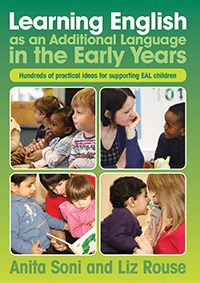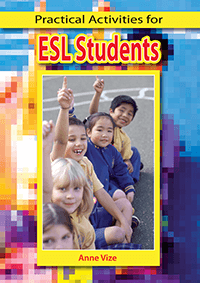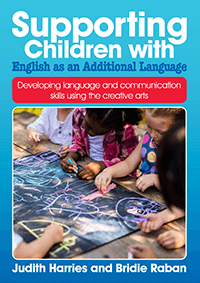Contents |
| Introduction | 4 |
| About this book | 6 |
| The national picture | 6 |
| What does this mean for your work with young children? | 8 |
| Settings used for case studies | 10 |
| Brief outline of each chapter | 11 |
| Chapter one: EAL essentials | 13 |
| What does EAL mean? | 13 |
| Groups of EAL learners | 14 |
| What is bilingualism? | 15 |
| Key EAL matters | 16 |
| Chapter two: How children learn languages | 22 |
| First language acquisition | 23 |
| Learning two languages simultaneously | 25 |
| How do children learn an additional language? | 26 |
| Stages of additional language acquisition | 27 |
| Factors that impact on additional language learning | 29 |
| Differences between languages | 30 |
| Chapter three: Helping children to settle in | 33 |
| Before the child starts | 33 |
| The child’s first day | 37 |
| The child’s first few weeks | 40 |
| Chapter four: Creating a suitable environment | 43 |
| Communication-friendly spaces | 43 |
| Making the environment suitable for EAL learners | 44 |
| Chapter five: Adult–child interaction | 54 |
| Key principles for quality adult–child interaction | 55 |
| Interacting with simultaneous learners (under 3 years) | 57 |
| Interacting with children who are new to English | 57 |
| Interacting with a child during the “silent period” | 61 |
| Providing opportunities for children to use their home language | 62 |
| The importance of play | 64 |
| Cultural differences in play | 65 |
| EAL language programs | 65 |
| Chapter six: Building positive relationships with families and carers | 66 |
| Developing partnership working with families | 67 |
| What does a good relationship between a family and an educator look like? | 67 |
| General advice to promote good relationship building | 67 |
| Potential challenges to partnership working | 69 |
| Overcoming potential challenges | 69 |
| Key messages to give to families | 72 |
| Working with interpreters | 74 |
| Chapter seven: Observation, assessment and planning | 75 |
| Involving families in the observation, assessment and planning cycle | 78 |
| Assessment before transition to school | 80 |
| Chapter eight: Working with children with communication difficulties | 84 |
| Understanding language, speech and communication needs | 85 |
| Identifying communication difficulties in EAL learners | 90 |
| Supporting EAL learners with language, speech and communication needs | 94 |
| Resources | 99 |
| Home activity sheets | 99 |
| Checklist for pre-start family meeting | 106 |
| Checklist for determining a child’s skills in their home language | 110 |
| References | 111 |
| Acknowledgements | 114 |





